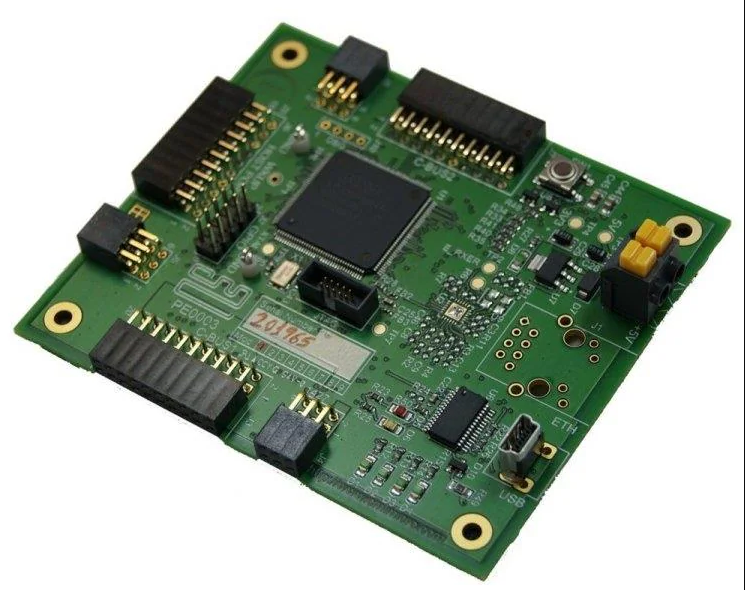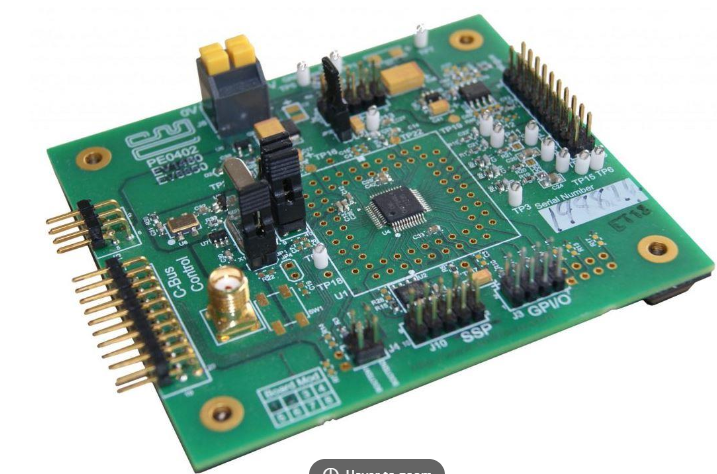Digital/Analogue Two-Way Radio Products
CMX7131/CMX7141 – Digital PMR (dPMR) Processors
The CMX7131 and CMX7141 are half-duplex processor IC platforms built on FirmASIC® technology that are suitable for use in multi-standard digital PMR (dPMR) and dual-mode (analogue/digital) systems.
FirmASIC® component technology allows on-chip sub-systems to be reconfigured by a Function Image™ (FI): this is a data file that is uploaded during device initialisation that defines the device’s function and feature set.
Dual mode and multi-mode digital PMR radios can now be developed based on a single radio platform conforming to a number of digital PMR systems/standards all with full analogue PMR backward compatibility.
The Ultimate FDMA Digital Radio Chipset
A number of the Function Images now support direct connection to CML’s CMX994 Direct Conversion Receiver. The combination of the CMX7131/7141 and CMX994 enables the highest integration, multi-standard FDMA digital/analogue PMR radio, to be realised. The CMX7131/7141 and CMX994 together address the market requirements for: Low power operation, small size, low cost, flexibility and high performance.
Seven Function Images are available, these can be downloaded from the CML Technical Portal (contact for access):
- CMX7131/7141 FI-1.x – dPMR Baseband Data Processor with Auxiliary System Clocks, ADCs and DACs
- CMX7131/7141 FI-2.x – ARIB STD-T98 DCR Baseband Processor with Auxiliary System Clocks, ADCs and DACs
- CMX7131/7141 FI-3.x – NXDN™ 4-FSK Baseband Data Processor with Auxiliary System Clocks, ADCs and DACs
- CMx7131/7141 FI-5.x – dPMR446 (mode 1/2) and Analogue PMR Baseband Processor with Auxiliary System Clocks, ADCs and DACs
- CMX7131/7141 FI-6.x ARIB STD-T102 Baseband Data Processor with Auxiliary System Clocks, ADCs and DACs
- CMX7131/7141 FI-7.x – dPMR® (mode 1/2/3) Baseband Data Processor (TS 102 658) with Auxiliary System Clocks, ADCs and DACs
- CMX7131/7141 FI-8.x – Analogue PMR Baseband Processor with I/Q Downconversion Interface Interface, Auxiliary System Clocks, ADCs and DACs
Click the links above or visit the "Downloads" section of this page to download the datasheets/access the Technical Portal for each individual Function Image.
Devices are available through our Distributor Network.
Features
- Multi-standard Digital PMR Processor Including Analogue PMR Operations
- Automatic Frame Sync Insertion and Detection (AFSD)
- Two Auxiliary ADCs
- Four Auxiliary DACs
- Three Analogue Inputs with Programmable Gain
- Auxiliary C-BUS Interface to CMX608 or CMX618
- Tx Outputs for Two-Point or I/Q Modulation
- Soft Decision Decoding Option
- Two RF Synthesisers (CMX7131 Only)
- Vocoder Connectivity, Management, Control and Data Transport
- RALCWI/TWELP and Third-party Vocoders
Applications
- Digital PMR Systems
- dPMR
- dPMR446
- dPMR Mode 1/2/3
- ARIB STD-T98 DCR
- ARIB STD-T102
- NXDN
- Analogue PMR
- Dual/Multi-mode Radios
Power Supply Requirement
- 3.0 to 3.6 V
Design Resources
CMX7131/7141 FAQ
Function Image™ Loading Options
Q. I am about to start a design using one of your FirmASIC® based products, what is the most suitable method of storing the associated Function Image™ in my project?
A. Our FirmASIC® based devices require a Function Image™ to configure their on-chip sub-systems.
This is a data file that is uploaded during device initialisation and defines the device’s function and feature set.
The Function Image™ can be loaded automatically from external serial EEPROM via a dedicated SPI bus or from a host µController over the built-in C-BUS serial interface.It is also possible with two specified memory devices to update the serial memory stored Function Image™ via the C-BUS and SPI interface.
CML supplies a dedicated Thick Stub Function Image™ to enable this capability. The linked flow diagram is an aide-memoir in that it makes it plain what is possible when choosing the most suitable method of storing a Function Image™ for your project.
CMX7131/CMX7141 with the AMBE-3000
Interfacing and implementing the AMBE-3000 Vocoder with the CMX7131/7141 devices for use in digital radio systems.
Download
CMX7131/41 - Interfacing CMX7131/CMX7141 with AMBE-3000™
Two scripts (transmit and receive) to enable interfacing and implementing the DVSI AMBE-3000™ with the CMX7131/CMX7141.
View
CMX7031/41 - CMXsynth1 450M
Synthesiser set-up example. Target board is the PE0201.
PE0402 for 6.144MHz Operation
Changes the PE0402 programming block to allow operation at 6.144MHz Note that some Function Images cannot operate at 6.144MHz
| PE0003 |  |
The PE0003 Evaluation Kit Interface Card is a global interface system for use with evaluation kits for CML’s new generation ICs, including FirmASIC™ based products. This greatly simplifies the approach to the evaluation and design-in process. | PE0003_Product_Preview |
| PE0402 |  |
The PE0402 Platform Evaluation Kit is designed to assist in the evaluation and application development of the CMX704x/CMX714x range of FirmASIC products. | PE0402_Product_Preview
|

